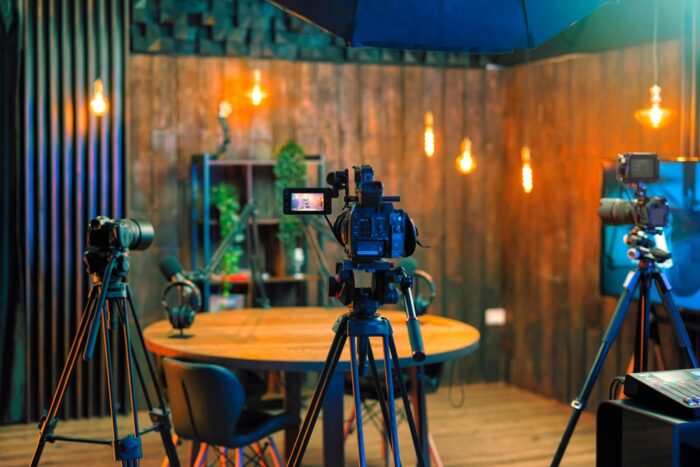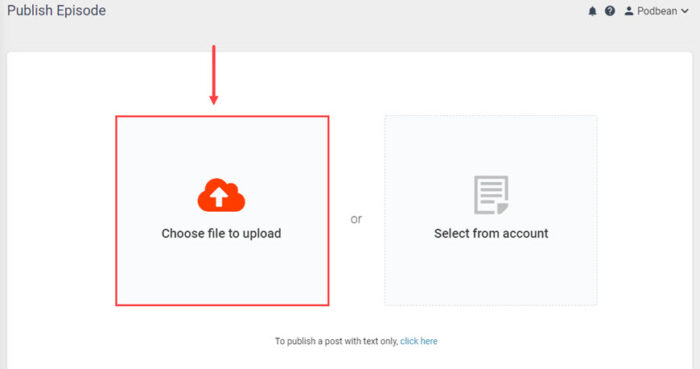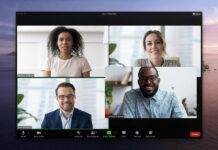
Learning how to optimize your videos for private internal podcasts is the next big thing in the digital communications trend. People relate more to what they can see, and that’s the edge that video podcasting provides.
And guess what? Only a few companies know how to start private internal video podcasts for their establishment. Why not get on the train before it becomes a must-have?
To get started, you need a private podcast that is perfect for internal communications. We will discuss other helpful steps for making a successful video podcast.
Ready to explore video podcasting? Let’s get started!
What is video podcasting all about?

While sometimes referred to as vodcasts, a visual podcast is simply a podcast with video content. The recorded series must contain both audio and visual content to be called video podcasts.
Therefore, it is different from an audio podcast. Starting a podcast is easy and requires only a video setup with your audio podcast recording equipment.
You can even convert audio podcasts to private internal video ones. Just record the video of the audio podcast session, or attach a relevant video feed.
10 steps to optimize videos for a private internal podcast
1. Decide on the purpose of the podcast
Start by defining your podcast content strategy niche. For private internal content – those are your employees or team members. The next thing is deciding what will interest your target audience.
There should be a distinct concept. For instance, will each private vodcast be an interview session of different departments? An employee work-stress management lifestyle series? If unsure, consider asking your staff for what they love to hear. It is even better if the chosen podcasting style offers the opportunity to train and develop employees.
2. Procure excellent podcast equipment

Your choice of podcasting equipment also determines how well you optimize your videos for professional internal podcasts. Low audio and video quality can disinterest the viewers.
Focus on significantly minimizing external noise through quality microphones and recording software. You will need a recording stand and device to record the video. What you purchase depends on the content strategy podcast setup. But we always advise people to refrain from using their built-in computer microphones.
3. Choose a podcasting format
The number of active employees listening to podcasts at work can depend on your chosen podcasting format. No rule says you must use the same format for all episodes.
However, you should evaluate what works best. Can you keep the employees engaged in a solo-host format? Or will you prefer an interview podcast format that allows more involvement? Do you have willing team members or guests for an interview series?
Other considerations include a conversational podcast series, an educational podcast show, or a fictional storytelling type.
4. Make a script

Making an engaging internal podcast usually requires. Scriptwriting does not have to do with eloquence. It’s more about aligning your points before recording. You don’t want to miss crucial points, so we suggest drafting what to say.
The written script should not be verbatim, or you might lose the natural speaking podcast tone and sound like a newsreader. You can just write out the key ideas in bulleted form.
5. Arrange the setup for recording
While you don’t have to go to a studio to record your internal comms pro podcasts, it’s best to set up a recording space properly. Three things are important when making engaging podcasts at work. They are the audio, visuals, and ambiance.
Aside from good audio equipment, minimize echo sources in the room. A small room with lighting should work. Ensure proper illumination or save yourself the stress by buying studio lights.
The last but often ignored consideration is the ambiance. Your environment matters and affects your composure and flow. A comfortable room setup matching the content is essential.
6. Record your podcast

After you have selected a podcast format and script, recording your engaging internal comms podcast videos comes next. We already talked about setting up your recording space. How you record the content strategy podcast depends on the podcasting format.
For an interview series, it is optional that the guest is physically available. You can screen-record the video cam. In addition, place priority on your appearance and maintain a vibe that depicts the content. For example, educational podcasts at work demand some level of professionalism as the host. Another tip is to ensure your device has sufficient memory before recording.
7. Edit your podcast
Keeping your employees listening to podcasts at work is only possible when the quality is good. Check for background noises and unnecessary pauses that interrupt the flow. Editing your podcast also involves cutting out unwanted parts or irrelevant sections. You should watch the video at least 2 – 3 times to omit issues.
That’s not all. The addition of free background music, intro, and outro are parts of the editing process too. It is an excellent podcast content strategy to keep listeners entertained.
8. Upload podcast episodes
Professionals that know how to start a business podcast will advise having about five ready episodes before the first launch. The reason is not far-fetched; it eases the pressure of keeping up with delivery dates.
Find a reliable podcast hosting platform for your internal comms pro podcast video series. You upload your video podcast to the podcasting platform and obtain a shareable link that could be embedded on your company’s website.
Also, think of a professional thumbnail that employees will see before clicking the play button. A simple way to do that is to capture a frame from the video and upload it as a thumbnail.
9. Track performance metrics
What is the benefit of a private internal video podcast that does not generate engagements? A waste of time, if we are being honest!
Tracking the performance of your engaging internal comms podcast videos should be easy using a professional private podcast hosting platform like Podbean.
Not only do you see how many people watched your video, but you can also see their locations and which sections generated the highest engagement. You know who is watching and can predict what topics they most likely want to see next.
10. Distribute repurposed content

Sharing repurposed video content or snippets of your podcast is a sure way to keep employees listening to podcasts at work. It maintains some level of engagement and awareness of the podcasting release schedules. This added buzz is a different way to bring employees together.
Conclusion
In order to optimize your videos for private internal podcasts, you need to understand how people consume this type of content. By understanding how people consume video content and implementing the best practices for optimizing videos, you can increase viewership and engagement of your private internal podcast.
Private podcasts require consistency in trying out new ideas. Be always ready to accept proven podcast content strategies.












